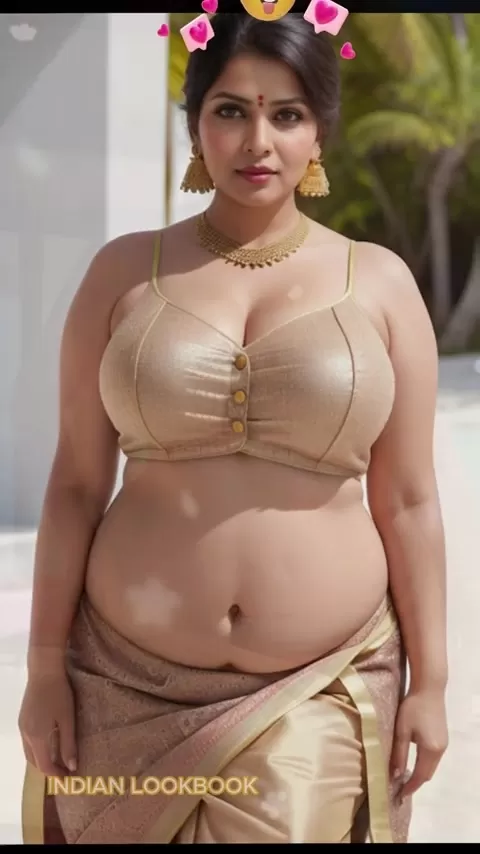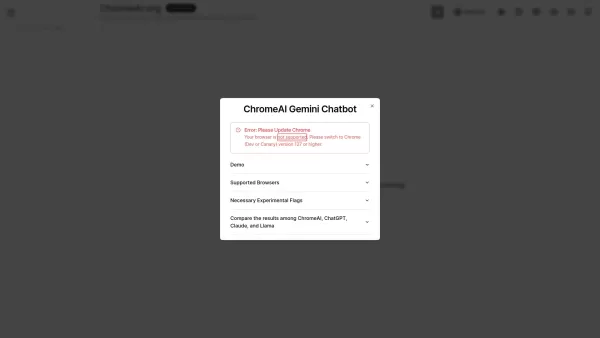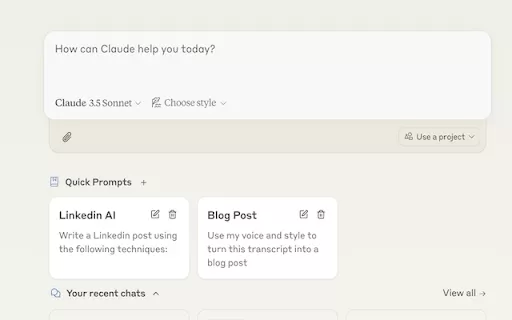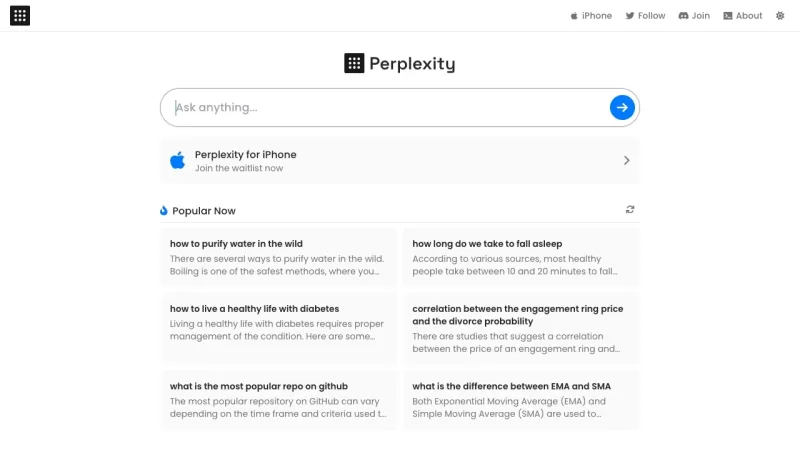Modern Twist on Tradition: Embracing the Indian Lookbook

 April 24, 2025
April 24, 2025

 MateoAdams
MateoAdams

 0
0
The Indian Lookbook: A Fusion of Tradition and Modernity
The Indian lookbook is a colorful tapestry, blending the rich threads of tradition with the vibrant hues of innovation. It's a celebration of the deep-rooted heritage of Indian fashion while also embracing the latest in contemporary style. Imagine seeing traditional sarees paired with modern crop tops, or exploring bold colors and unique silhouettes. This vibrant mix offers a diverse and thrilling array of fashion options. The modern Indian woman is at the heart of this evolution, redefining her style to create looks that are both timeless and uniquely personal, showcasing the beauty of Indian women and their fashion.
Key Elements of the Modern Indian Lookbook
- A fusion of traditional and contemporary styles.
- Crop tops paired with sarees for a fresh twist.
- Bold colors and innovative silhouettes defining the new fashion landscape.
- The crucial role of accessories in enhancing the lookbook aesthetic.
- Emphasis on comfort and practicality in contemporary Indian fashion.
- The amplifying effect of social media on the reach and influence of the Indian lookbook.
- The growing importance of sustainability in Indian fashion.
- Reflecting the evolving identity of the modern Indian woman.
- Designers drawing inspiration from India's diverse cultural heritage.
- Styling tips and tricks for creating a personalized Indian lookbook.
The Evolution of the Indian Lookbook
What is the Indian Lookbook?
The Indian lookbook is more than a mere collection of outfits; it's a visual story of Indian fashion, culture, and identity. It captures the varied ways Indian women express themselves through their clothing, accessories, and styling choices. Rooted historically in traditional attire like sarees, salwar kameez, and lehengas, the Indian lookbook has transformed to embrace modern trends and sensibilities. It now spans a broad range of styles, from classic elegance to cutting-edge experimentation.
This lookbook reflects the changing roles and aspirations of Indian women, showcasing their confidence and ability to blend tradition with modernity. Whether it's a college student pairing a kurta with jeans or a professional donning a power suit with Indian accessories, the Indian lookbook is about crafting a personal style statement that mirrors one's individuality.
Influenced by Bollywood, social media, and global fashion, the Indian lookbook is dynamic. Celebrities and influencers set trends and inspire new looks, while platforms like Instagram have opened up Indian fashion to a wider audience, allowing everyday women to showcase their style and connect with others. This has fostered a lively online community where fashion ideas are shared and celebrated.
Ultimately, the Indian lookbook is a continually evolving concept, mirroring the dynamism and diversity of Indian culture. It celebrates Indian women and their knack for embracing tradition while carving out their unique path in fashion. To embrace the Indian lookbook is to embrace your heritage and personal style, showcasing your unique beauty and creativity to the world.
The Influence of Bollywood and Social Media on Indian Fashion
Bollywood and social media have transformed the Indian fashion scene, profoundly impacting the Indian lookbook. Bollywood stars have always been fashion icons, setting trends both on and off the screen. Their style choices are closely watched and often emulated, influencing market trends. Social media platforms like Instagram and Facebook have amplified this influence, providing a direct line of communication between celebrities and their followers.
Social media has also empowered ordinary individuals to become fashion influencers. With just a smartphone, anyone can showcase their style and gain a following. This has democratized fashion, making trends not just the domain of designers and celebrities but also influenced by everyday people. Bloggers, vloggers, and Instagrammers share their fashion insights, creating a dynamic online community.
The global reach of social media has made Indian fashion more accessible worldwide. Designers and brands can now reach customers globally, showcasing their collections and building brand awareness. This has sparked increased interest in Indian fashion globally, with designers integrating Indian elements into their collections and consumers embracing Indian textiles and designs.
However, the influence of Bollywood and social media isn't without its challenges. The chase for trends can lead to a uniformity of style, with everyone trying to look the same. It's essential to remember that fashion is a form of self-expression, and the best lookbook is one that reflects your unique personality. While drawing inspiration from Bollywood and social media is fine, maintaining your individuality and creating an authentic lookbook is crucial.
In summary, Bollywood and social media have reshaped the Indian fashion landscape, making it more democratic and accessible. Yet, it's vital to use these platforms as inspiration while crafting a lookbook that truly represents you.
Modern Twists: Crop Tops and Sarees
One of the most exciting trends in the Indian lookbook is the pairing of crop tops with sarees. This unexpected blend adds a modern twist to a traditional garment, resulting in a stylish and unique look. Whether opting for a simple crop top or an embellished one, the choice depends on the occasion and personal style.

This fusion of styles showcases the versatility of the saree and the creativity of the modern Indian fashion scene. The beauty of this trend is its adaptability; a saree can be styled with a crop top for a casual daytime look or a glamorous evening ensemble. For a casual look, pair a lightweight cotton saree with a simple crop top and minimal accessories. For formal occasions, choose a silk or brocade saree with an embellished crop top and statement jewelry.
When choosing a crop top to wear with a saree, consider the saree's color and fabric, the occasion, and your personal style. A contrasting color can create a bold look, while matching colors offer a more subtle effect. The fabric of the crop top should complement the saree; for example, a silk saree pairs well with a velvet or brocade crop top, while a cotton saree goes with linen or cotton.
This trend is a prime example of the Indian lookbook's evolution, showing Indian women's willingness to experiment and challenge traditional norms. By pairing a crop top with a saree, they create a look that's both modern and rooted in tradition, uniquely their own.
Experiment with different colors, fabrics, and embellishments to create your personalized version of this trend. Don't be afraid to step out of your comfort zone and try something new. The key is to have fun and express your individuality through your style, embracing the fusion of styles to create a lookbook that's both modern and authentically you.
Accessories and Styling Tips for a Complete Indian Lookbook
Accessories are vital in completing the Indian lookbook aesthetic, adding the final touches that elevate an outfit. From traditional jewelry to modern handbags, the right accessories can transform your look and express your personal style. Here are some essential accessories and styling tips for crafting a complete Indian lookbook:
- Jewelry: Jewelry is a cornerstone of Indian fashion. Traditional pieces like jhumkas, necklaces, bangles, and anklets are often worn with sarees, lehengas, and salwar kameez. Modern Indian women also incorporate contemporary jewelry like statement earrings, layered necklaces, and delicate bracelets. Choose pieces that complement your outfit and reflect your personal style.
- Handbags: Not just functional, handbags are stylish accessories. Clutches, potlis, and sling bags are popular with Indian outfits. Select a handbag that matches your outfit and suits the occasion. A heavily embellished potli bag is perfect for a wedding, while a simple clutch fits a casual event better.
- Footwear: The right footwear can make or break an outfit. Sandals, heels, and flats are common choices for Indian outfits. Consider the occasion and your outfit's style when choosing footwear. Heels add height and elegance to formal outfits, while flats are more comfortable for casual events.
- Scarves and Shawls: These can add warmth and style to your Indian lookbook. They can be draped over your shoulders, tied around your neck, or used as a headscarf. Choose a scarf or shawl that complements your outfit and is suitable for the weather.
Here are some additional styling tips for creating a complete Indian lookbook:
- Pay attention to details: Small details can significantly impact your overall look. Ensure your clothes fit well, your accessories are coordinated, and your hair and makeup are well-groomed.
- Experiment with colors and patterns: Don't shy away from mixing different colors and patterns. Indian fashion is known for its vibrant hues and intricate designs. Create a unique and eye-catching look by blending different elements.
- Embrace your individuality: The most crucial styling tip is to embrace your individuality. Your lookbook should reflect your personal style and make you feel confident and comfortable. Don't be afraid to break the rules and create a lookbook that's uniquely you.
By incorporating these accessories and styling tips into your Indian lookbook, you can craft looks that are stylish and authentic, showcasing the beauty and diversity of Indian fashion.
Sustainable and Ethical Indian Fashion Choices
Embracing Eco-Friendly Fabrics and Practices
Sustainability is increasingly important in Indian fashion, with designers and consumers seeking eco-friendly alternatives to traditional materials and practices. The fashion industry's environmental impact is notorious, from textile production pollution to fast fashion waste. However, the Indian fashion industry is addressing these issues and promoting more sustainable practices.
A key focus is on using eco-friendly fabrics like organic cotton, khadi, and silk. Organic cotton is grown without harmful pesticides and fertilizers, reducing its environmental impact. Khadi is hand-spun and hand-woven, minimizing energy consumption and supporting local artisans. Silk, a natural fiber, is biodegradable and requires less water and energy to produce than synthetic fabrics.
Designers are also adopting sustainable production practices, such as reducing waste, conserving water, and using renewable energy sources. Some are upcycling old clothes and fabrics into new designs, promoting a circular economy.
Consumers play a vital role in promoting sustainable Indian fashion by choosing eco-friendly fabrics and supporting brands committed to sustainable practices. They can also extend their clothes' lifespan by caring for them properly and repairing them when needed.
Here are some tips for making sustainable Indian fashion choices:
- Look for eco-friendly fabrics like organic cotton, khadi, and silk.
- Support brands committed to sustainable production practices.
- Buy less and focus on quality over quantity, building a wardrobe of timeless pieces.
- Take care of your clothes by washing them in cold water, hanging them to dry, and repairing them when necessary.
- Upcycle and recycle by donating or selling clothes you no longer wear and considering upcycling old clothes into new designs.
By embracing sustainable and ethical choices, we can create a more responsible and environmentally friendly Indian fashion industry. This benefits the planet and supports local artisans, promoting a more equitable and just society.
How to Curate Your Own Indian Lookbook
Step-by-Step Guide to Creating a Personalized Lookbook
Creating your own Indian lookbook is a fun and rewarding way to express your personal style and connect with your cultural heritage. Here's a step-by-step guide to help you get started:
- Define Your Style: Before collecting outfits, define your personal style. Consider your favorite colors, fabrics, and silhouettes. Do you prefer traditional or modern styles? What occasions do you typically dress for? These questions will help you create a lookbook that reflects your personality.
- Gather Inspiration: Once you know your style, gather inspiration. Browse Indian fashion magazines, follow bloggers and influencers on social media, and create a Pinterest board to collect your favorite looks. Pay attention to details like colors, fabrics, accessories, and styling techniques.
- Curate Your Wardrobe: Examine your existing wardrobe and identify pieces that fit your style. These could be traditional Indian garments like sarees, lehengas, and salwar kameez, or modern pieces like crop tops, jeans, and dresses. Mix and match different styles to create unique looks.
- Accessorize: Accessories can transform your overall look. Experiment with jewelry, handbags, footwear, and scarves to find the perfect finishing touches for your outfits. Consider investing in key pieces that can be worn with multiple outfits.
- Document Your Looks: Once you've curated your outfits, document them. Take photos of yourself wearing each outfit and create a digital or physical lookbook. Use photo editing apps to enhance your photos and add captions describing each outfit's details.
- Experiment and Have Fun: Creating a lookbook is about experimentation and enjoyment. Don't be afraid to try new things and step outside your comfort zone. The most important thing is to create looks that make you feel confident and comfortable.
By following these steps, you can create a personalized Indian lookbook that reflects your unique style and celebrates your cultural heritage. This journey is exciting and one you won't regret taking as you embrace being an Indian woman.
Frequently Asked Questions
How can I incorporate traditional Indian elements into a modern wardrobe?
Incorporating traditional Indian elements into a modern wardrobe involves balancing tradition and modernity. Here are some tips:
- Start with the basics: Begin by adding a few key pieces of traditional Indian clothing to your wardrobe, such as a kurta, a dupatta, or jhumkas. These can be easily styled with modern clothing for a fusion look.
- Mix and match: Don't hesitate to mix traditional Indian clothing with modern pieces. For example, pair a kurta with jeans or a saree with a crop top.
- Accessorize: Accessories are a great way to add Indian flair to your outfits. Wear traditional Indian jewelry like jhumkas, necklaces, or bangles with modern clothing. You can also carry a potli bag or wear juttis to complete your look.
- Focus on fabrics: Choose comfortable and stylish fabrics like cotton, silk, and linen for Indian clothing. Experiment with different textures and patterns to add visual interest.
- Don't be afraid to experiment: The most important thing is to experiment and have fun. Try new things and see what works for you. There are no hard and fast rules in fashion, so break the mold and create your unique style.
What are the key trends shaping the Indian fashion landscape in 2025?
The Indian fashion landscape in 2025 is shaped by several key trends:
- Sustainability: There's a growing demand for eco-friendly fabrics, sustainable production practices, and ethical labor standards.
- Inclusivity: The industry is becoming more inclusive, catering to a wider range of body types, skin tones, and gender identities.
- Digitalization: E-commerce and social media have transformed how Indian fashion is consumed and marketed. Online shopping is increasingly popular, and social media platforms showcase new collections and connect with customers.
- Fusion: The blending of traditional Indian and modern Western styles continues to be a major trend. Designers are experimenting with new silhouettes, fabrics, and embellishments to create innovative designs.
- Regionalism: There's a growing appreciation for the diversity of Indian textiles and crafts. Designers draw inspiration from regional traditions and promote the work of local artisans.
- Personalization: Consumers are seeking personalized experiences and products. Designers offer customized clothing and accessories to meet individual needs and preferences.
The Indian fashion landscape in 2025 is dynamic and evolving. Key trends shaping the industry include sustainability, inclusivity, digitalization, fusion, regionalism, and personalization. By embracing these trends, the Indian fashion industry can create a more responsible, equitable, and innovative future.
Related article
 Top 10 AI Tools for Social Media in April 2025
Social media's ever-growing presence means that the wealth of data and insights available to businesses is also expanding. For any company aiming to thrive in an AI-driven future, having a robust social media strategy isn't just an option—it's a necessity. Those without one risk being left behind in
Top 10 AI Tools for Social Media in April 2025
Social media's ever-growing presence means that the wealth of data and insights available to businesses is also expanding. For any company aiming to thrive in an AI-driven future, having a robust social media strategy isn't just an option—it's a necessity. Those without one risk being left behind in
 Analysis Reveals AI's Responses on China Vary by Language
Exploring AI Censorship: A Language-Based AnalysisIt's no secret that AI models from Chinese labs, such as DeepSeek, are subject to strict censorship rules. A 2023 regulation from China's ruling party explicitly prohibits these models from generating content that could undermine national unity or so
Analysis Reveals AI's Responses on China Vary by Language
Exploring AI Censorship: A Language-Based AnalysisIt's no secret that AI models from Chinese labs, such as DeepSeek, are subject to strict censorship rules. A 2023 regulation from China's ruling party explicitly prohibits these models from generating content that could undermine national unity or so
 4 Types of AI Agent Enthusiasts: Key Insights for Businesses
AI Agents Are Revolutionizing Consumer LifeSalesforce's recent research into the world of AI agents has uncovered a fascinating trend: consumers are not just interested in AI for work; they're eager to use it to streamline their daily lives. A survey of 2,552 US consumers highlighted four distinct p
Comments (0)
0/200
4 Types of AI Agent Enthusiasts: Key Insights for Businesses
AI Agents Are Revolutionizing Consumer LifeSalesforce's recent research into the world of AI agents has uncovered a fascinating trend: consumers are not just interested in AI for work; they're eager to use it to streamline their daily lives. A survey of 2,552 US consumers highlighted four distinct p
Comments (0)
0/200

 April 24, 2025
April 24, 2025

 MateoAdams
MateoAdams

 0
0
The Indian Lookbook: A Fusion of Tradition and Modernity
The Indian lookbook is a colorful tapestry, blending the rich threads of tradition with the vibrant hues of innovation. It's a celebration of the deep-rooted heritage of Indian fashion while also embracing the latest in contemporary style. Imagine seeing traditional sarees paired with modern crop tops, or exploring bold colors and unique silhouettes. This vibrant mix offers a diverse and thrilling array of fashion options. The modern Indian woman is at the heart of this evolution, redefining her style to create looks that are both timeless and uniquely personal, showcasing the beauty of Indian women and their fashion.
Key Elements of the Modern Indian Lookbook
- A fusion of traditional and contemporary styles.
- Crop tops paired with sarees for a fresh twist.
- Bold colors and innovative silhouettes defining the new fashion landscape.
- The crucial role of accessories in enhancing the lookbook aesthetic.
- Emphasis on comfort and practicality in contemporary Indian fashion.
- The amplifying effect of social media on the reach and influence of the Indian lookbook.
- The growing importance of sustainability in Indian fashion.
- Reflecting the evolving identity of the modern Indian woman.
- Designers drawing inspiration from India's diverse cultural heritage.
- Styling tips and tricks for creating a personalized Indian lookbook.
The Evolution of the Indian Lookbook
What is the Indian Lookbook?
The Indian lookbook is more than a mere collection of outfits; it's a visual story of Indian fashion, culture, and identity. It captures the varied ways Indian women express themselves through their clothing, accessories, and styling choices. Rooted historically in traditional attire like sarees, salwar kameez, and lehengas, the Indian lookbook has transformed to embrace modern trends and sensibilities. It now spans a broad range of styles, from classic elegance to cutting-edge experimentation.
This lookbook reflects the changing roles and aspirations of Indian women, showcasing their confidence and ability to blend tradition with modernity. Whether it's a college student pairing a kurta with jeans or a professional donning a power suit with Indian accessories, the Indian lookbook is about crafting a personal style statement that mirrors one's individuality.
Influenced by Bollywood, social media, and global fashion, the Indian lookbook is dynamic. Celebrities and influencers set trends and inspire new looks, while platforms like Instagram have opened up Indian fashion to a wider audience, allowing everyday women to showcase their style and connect with others. This has fostered a lively online community where fashion ideas are shared and celebrated.
Ultimately, the Indian lookbook is a continually evolving concept, mirroring the dynamism and diversity of Indian culture. It celebrates Indian women and their knack for embracing tradition while carving out their unique path in fashion. To embrace the Indian lookbook is to embrace your heritage and personal style, showcasing your unique beauty and creativity to the world.
The Influence of Bollywood and Social Media on Indian Fashion
Bollywood and social media have transformed the Indian fashion scene, profoundly impacting the Indian lookbook. Bollywood stars have always been fashion icons, setting trends both on and off the screen. Their style choices are closely watched and often emulated, influencing market trends. Social media platforms like Instagram and Facebook have amplified this influence, providing a direct line of communication between celebrities and their followers.
Social media has also empowered ordinary individuals to become fashion influencers. With just a smartphone, anyone can showcase their style and gain a following. This has democratized fashion, making trends not just the domain of designers and celebrities but also influenced by everyday people. Bloggers, vloggers, and Instagrammers share their fashion insights, creating a dynamic online community.
The global reach of social media has made Indian fashion more accessible worldwide. Designers and brands can now reach customers globally, showcasing their collections and building brand awareness. This has sparked increased interest in Indian fashion globally, with designers integrating Indian elements into their collections and consumers embracing Indian textiles and designs.
However, the influence of Bollywood and social media isn't without its challenges. The chase for trends can lead to a uniformity of style, with everyone trying to look the same. It's essential to remember that fashion is a form of self-expression, and the best lookbook is one that reflects your unique personality. While drawing inspiration from Bollywood and social media is fine, maintaining your individuality and creating an authentic lookbook is crucial.
In summary, Bollywood and social media have reshaped the Indian fashion landscape, making it more democratic and accessible. Yet, it's vital to use these platforms as inspiration while crafting a lookbook that truly represents you.
Modern Twists: Crop Tops and Sarees
One of the most exciting trends in the Indian lookbook is the pairing of crop tops with sarees. This unexpected blend adds a modern twist to a traditional garment, resulting in a stylish and unique look. Whether opting for a simple crop top or an embellished one, the choice depends on the occasion and personal style.

This fusion of styles showcases the versatility of the saree and the creativity of the modern Indian fashion scene. The beauty of this trend is its adaptability; a saree can be styled with a crop top for a casual daytime look or a glamorous evening ensemble. For a casual look, pair a lightweight cotton saree with a simple crop top and minimal accessories. For formal occasions, choose a silk or brocade saree with an embellished crop top and statement jewelry.
When choosing a crop top to wear with a saree, consider the saree's color and fabric, the occasion, and your personal style. A contrasting color can create a bold look, while matching colors offer a more subtle effect. The fabric of the crop top should complement the saree; for example, a silk saree pairs well with a velvet or brocade crop top, while a cotton saree goes with linen or cotton.
This trend is a prime example of the Indian lookbook's evolution, showing Indian women's willingness to experiment and challenge traditional norms. By pairing a crop top with a saree, they create a look that's both modern and rooted in tradition, uniquely their own.
Experiment with different colors, fabrics, and embellishments to create your personalized version of this trend. Don't be afraid to step out of your comfort zone and try something new. The key is to have fun and express your individuality through your style, embracing the fusion of styles to create a lookbook that's both modern and authentically you.
Accessories and Styling Tips for a Complete Indian Lookbook
Accessories are vital in completing the Indian lookbook aesthetic, adding the final touches that elevate an outfit. From traditional jewelry to modern handbags, the right accessories can transform your look and express your personal style. Here are some essential accessories and styling tips for crafting a complete Indian lookbook:
- Jewelry: Jewelry is a cornerstone of Indian fashion. Traditional pieces like jhumkas, necklaces, bangles, and anklets are often worn with sarees, lehengas, and salwar kameez. Modern Indian women also incorporate contemporary jewelry like statement earrings, layered necklaces, and delicate bracelets. Choose pieces that complement your outfit and reflect your personal style.
- Handbags: Not just functional, handbags are stylish accessories. Clutches, potlis, and sling bags are popular with Indian outfits. Select a handbag that matches your outfit and suits the occasion. A heavily embellished potli bag is perfect for a wedding, while a simple clutch fits a casual event better.
- Footwear: The right footwear can make or break an outfit. Sandals, heels, and flats are common choices for Indian outfits. Consider the occasion and your outfit's style when choosing footwear. Heels add height and elegance to formal outfits, while flats are more comfortable for casual events.
- Scarves and Shawls: These can add warmth and style to your Indian lookbook. They can be draped over your shoulders, tied around your neck, or used as a headscarf. Choose a scarf or shawl that complements your outfit and is suitable for the weather.
Here are some additional styling tips for creating a complete Indian lookbook:
- Pay attention to details: Small details can significantly impact your overall look. Ensure your clothes fit well, your accessories are coordinated, and your hair and makeup are well-groomed.
- Experiment with colors and patterns: Don't shy away from mixing different colors and patterns. Indian fashion is known for its vibrant hues and intricate designs. Create a unique and eye-catching look by blending different elements.
- Embrace your individuality: The most crucial styling tip is to embrace your individuality. Your lookbook should reflect your personal style and make you feel confident and comfortable. Don't be afraid to break the rules and create a lookbook that's uniquely you.
By incorporating these accessories and styling tips into your Indian lookbook, you can craft looks that are stylish and authentic, showcasing the beauty and diversity of Indian fashion.
Sustainable and Ethical Indian Fashion Choices
Embracing Eco-Friendly Fabrics and Practices
Sustainability is increasingly important in Indian fashion, with designers and consumers seeking eco-friendly alternatives to traditional materials and practices. The fashion industry's environmental impact is notorious, from textile production pollution to fast fashion waste. However, the Indian fashion industry is addressing these issues and promoting more sustainable practices.
A key focus is on using eco-friendly fabrics like organic cotton, khadi, and silk. Organic cotton is grown without harmful pesticides and fertilizers, reducing its environmental impact. Khadi is hand-spun and hand-woven, minimizing energy consumption and supporting local artisans. Silk, a natural fiber, is biodegradable and requires less water and energy to produce than synthetic fabrics.
Designers are also adopting sustainable production practices, such as reducing waste, conserving water, and using renewable energy sources. Some are upcycling old clothes and fabrics into new designs, promoting a circular economy.
Consumers play a vital role in promoting sustainable Indian fashion by choosing eco-friendly fabrics and supporting brands committed to sustainable practices. They can also extend their clothes' lifespan by caring for them properly and repairing them when needed.
Here are some tips for making sustainable Indian fashion choices:
- Look for eco-friendly fabrics like organic cotton, khadi, and silk.
- Support brands committed to sustainable production practices.
- Buy less and focus on quality over quantity, building a wardrobe of timeless pieces.
- Take care of your clothes by washing them in cold water, hanging them to dry, and repairing them when necessary.
- Upcycle and recycle by donating or selling clothes you no longer wear and considering upcycling old clothes into new designs.
By embracing sustainable and ethical choices, we can create a more responsible and environmentally friendly Indian fashion industry. This benefits the planet and supports local artisans, promoting a more equitable and just society.
How to Curate Your Own Indian Lookbook
Step-by-Step Guide to Creating a Personalized Lookbook
Creating your own Indian lookbook is a fun and rewarding way to express your personal style and connect with your cultural heritage. Here's a step-by-step guide to help you get started:
- Define Your Style: Before collecting outfits, define your personal style. Consider your favorite colors, fabrics, and silhouettes. Do you prefer traditional or modern styles? What occasions do you typically dress for? These questions will help you create a lookbook that reflects your personality.
- Gather Inspiration: Once you know your style, gather inspiration. Browse Indian fashion magazines, follow bloggers and influencers on social media, and create a Pinterest board to collect your favorite looks. Pay attention to details like colors, fabrics, accessories, and styling techniques.
- Curate Your Wardrobe: Examine your existing wardrobe and identify pieces that fit your style. These could be traditional Indian garments like sarees, lehengas, and salwar kameez, or modern pieces like crop tops, jeans, and dresses. Mix and match different styles to create unique looks.
- Accessorize: Accessories can transform your overall look. Experiment with jewelry, handbags, footwear, and scarves to find the perfect finishing touches for your outfits. Consider investing in key pieces that can be worn with multiple outfits.
- Document Your Looks: Once you've curated your outfits, document them. Take photos of yourself wearing each outfit and create a digital or physical lookbook. Use photo editing apps to enhance your photos and add captions describing each outfit's details.
- Experiment and Have Fun: Creating a lookbook is about experimentation and enjoyment. Don't be afraid to try new things and step outside your comfort zone. The most important thing is to create looks that make you feel confident and comfortable.
By following these steps, you can create a personalized Indian lookbook that reflects your unique style and celebrates your cultural heritage. This journey is exciting and one you won't regret taking as you embrace being an Indian woman.
Frequently Asked Questions
How can I incorporate traditional Indian elements into a modern wardrobe?
Incorporating traditional Indian elements into a modern wardrobe involves balancing tradition and modernity. Here are some tips:
- Start with the basics: Begin by adding a few key pieces of traditional Indian clothing to your wardrobe, such as a kurta, a dupatta, or jhumkas. These can be easily styled with modern clothing for a fusion look.
- Mix and match: Don't hesitate to mix traditional Indian clothing with modern pieces. For example, pair a kurta with jeans or a saree with a crop top.
- Accessorize: Accessories are a great way to add Indian flair to your outfits. Wear traditional Indian jewelry like jhumkas, necklaces, or bangles with modern clothing. You can also carry a potli bag or wear juttis to complete your look.
- Focus on fabrics: Choose comfortable and stylish fabrics like cotton, silk, and linen for Indian clothing. Experiment with different textures and patterns to add visual interest.
- Don't be afraid to experiment: The most important thing is to experiment and have fun. Try new things and see what works for you. There are no hard and fast rules in fashion, so break the mold and create your unique style.
What are the key trends shaping the Indian fashion landscape in 2025?
The Indian fashion landscape in 2025 is shaped by several key trends:
- Sustainability: There's a growing demand for eco-friendly fabrics, sustainable production practices, and ethical labor standards.
- Inclusivity: The industry is becoming more inclusive, catering to a wider range of body types, skin tones, and gender identities.
- Digitalization: E-commerce and social media have transformed how Indian fashion is consumed and marketed. Online shopping is increasingly popular, and social media platforms showcase new collections and connect with customers.
- Fusion: The blending of traditional Indian and modern Western styles continues to be a major trend. Designers are experimenting with new silhouettes, fabrics, and embellishments to create innovative designs.
- Regionalism: There's a growing appreciation for the diversity of Indian textiles and crafts. Designers draw inspiration from regional traditions and promote the work of local artisans.
- Personalization: Consumers are seeking personalized experiences and products. Designers offer customized clothing and accessories to meet individual needs and preferences.
The Indian fashion landscape in 2025 is dynamic and evolving. Key trends shaping the industry include sustainability, inclusivity, digitalization, fusion, regionalism, and personalization. By embracing these trends, the Indian fashion industry can create a more responsible, equitable, and innovative future.
 Top 10 AI Tools for Social Media in April 2025
Social media's ever-growing presence means that the wealth of data and insights available to businesses is also expanding. For any company aiming to thrive in an AI-driven future, having a robust social media strategy isn't just an option—it's a necessity. Those without one risk being left behind in
Top 10 AI Tools for Social Media in April 2025
Social media's ever-growing presence means that the wealth of data and insights available to businesses is also expanding. For any company aiming to thrive in an AI-driven future, having a robust social media strategy isn't just an option—it's a necessity. Those without one risk being left behind in
 Analysis Reveals AI's Responses on China Vary by Language
Exploring AI Censorship: A Language-Based AnalysisIt's no secret that AI models from Chinese labs, such as DeepSeek, are subject to strict censorship rules. A 2023 regulation from China's ruling party explicitly prohibits these models from generating content that could undermine national unity or so
Analysis Reveals AI's Responses on China Vary by Language
Exploring AI Censorship: A Language-Based AnalysisIt's no secret that AI models from Chinese labs, such as DeepSeek, are subject to strict censorship rules. A 2023 regulation from China's ruling party explicitly prohibits these models from generating content that could undermine national unity or so
 4 Types of AI Agent Enthusiasts: Key Insights for Businesses
AI Agents Are Revolutionizing Consumer LifeSalesforce's recent research into the world of AI agents has uncovered a fascinating trend: consumers are not just interested in AI for work; they're eager to use it to streamline their daily lives. A survey of 2,552 US consumers highlighted four distinct p
4 Types of AI Agent Enthusiasts: Key Insights for Businesses
AI Agents Are Revolutionizing Consumer LifeSalesforce's recent research into the world of AI agents has uncovered a fascinating trend: consumers are not just interested in AI for work; they're eager to use it to streamline their daily lives. A survey of 2,552 US consumers highlighted four distinct p
5 Easy Steps to Reclaim Your Online Data Privacy - Start Today
































